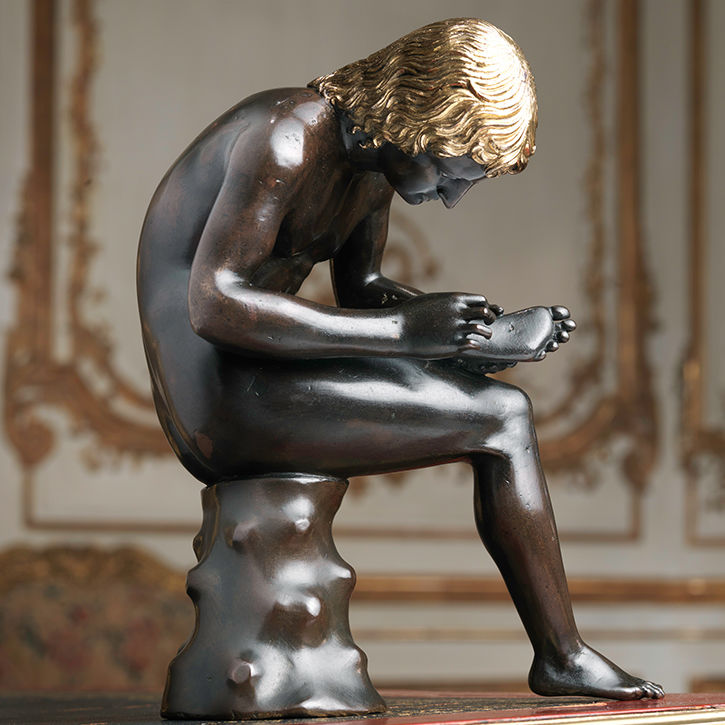Spinario

Antico (Italian, Mantua ca. 1460–1528). Spinario (Boy Pulling a Thorn from His Foot), probably modeled by 1496, cast ca. 1501. Bronze, partially gilt (hair) and silvered (eyes). The Metropolitan Museum of Art, New York, Gift of Mrs. Charles Wrightsman, 2012 (2012.157).
This small sculpture embodies two acts of concentration—that of the nude youth about to pull a thorn from his foot as quickly and painlessly as he can, and that of the sculptor who has miniaturized an ancient bronze statue, the Spinario, one of most celebrated sculptures in the city of Rome. The Spinario has no known story. Instead, it was celebrated as a supremely beautiful representation of the human body in complex action. Antico made exquisitely animated bronze versions of Roman statuary that were kept in his aristocratic patrons' studies. This piece would have be stored and displayed on a shelf above eye level, so it was designed to be seen from below. But it is also light enough to be taken down, examined more closely, turned in the hand, and even caressed.
"He has that childish quality of doing something in public that absorbs him utterly."
—Luke Syson, curator
"Your perceptual vantage point changes dramatically with this sculpture by the mere fact that you can move around it."
—Eric Kandel, neuroscientist
"If you look up into his face, you'd be struck by the silver in his eyes."
—Luke Syson, curator
All voices: Jackie Terrassa, curator; Luke Syson, curator; Eric Kandel, neuroscientist
Transcripts: Focused in Full Sight (Video), A Body in the Palm of Your Hand (Video)